A Week in Korea is Not Enough
First stop is Jeju Island
Previously, I wrote about giving our baroo restaurant team a week’s break. Our team needed time away from the restaurant, and Kwang and I needed time away from this physical space where we had camped out for six months—more than a year if you include all of the pre-opening craziness. Being in one place for so long is not natural for either me or Kwang. While Kwang and I have quite different personalities, one of the defining commonalities that ties us is we are both restless nomads at heart.
During old baroo’s three-year tenure, Kwang and his business partner closed baroo for extended periods and Kwang traveled to places like Mexico City, Hong Kong, and of course Korea, his motherland. Kwang’s only major expenses back then were travel-related. And aside from the odd gadget, this still holds true.
I also have always been game for a trip abroad. For me, one of the primary joys of living in London and Hong Kong is that they were (still are) ideal hubs from which to travel outwards. (Hong Kong was simply the best, with the most efficient airport, in-town check-in, the express train from Central, ID scanners that work — how I miss you HK!)
Kwang and I have both been fortunate enough to travel broadly. And we both work, in large part, so we can continue to travel throughout our lives and, now, also show our son the world.
So in March, we eked out every second of our week’s break to go to Korea. We drove to the airport straight from our last service on a Saturday, boarded the red-eye with our son, (I) watched a year’s worth of movies on the plane without blinking, landed Monday morning in Seoul and ran to Kwang’s parents’ home where a feast was laid out on the table at 7 am, then flew to Jeju Island. The rest of our trip was as efficiently packed and yet still felt luxurious and fortifying. A week was not nearly long enough. We actually did travel to Japan and Korea early last year for 3.5 weeks, before we opened. I’m not sure when we’ll be able to do a trip like that again. We could easily stay in Korea for a month and that wouldn’t feel like enough. But Kwang and I did agree that the week we had was just perfect nonetheless.
Just as quick as our trip, here are the highlights from the first part of our trip on Jeju Island! We spent a few days on Jeju Island with Kwang’s parents. It was a pure family holiday which we hope to do with them every year as they get older. Time doesn’t feel as infinite when you see your toddler son’s hand cradled in his grandfather’s hand while sitting together in the backseat of your rental car. Kwang and I have travelled to Jeju before together and separately so this trip was for our parents and son to enjoy. There was not as much food touring as we normally do with the focus on leisure and rest. Plus it rained most of the time so we didn’t see get to see the legendary haenyeo again. Next time (which will hopefully be soon)!
Day 1 — Jeju Island 제주도 — Jeju City — 제주시
Dongmun Market 동문시장: During the day, the market is filled with Jeju-do’s ocean bounty, famous hallabong citrus and dried wild greens. During the evening, young people open their food stalls and blast dance music, and crowds will form to watch young men in black dancing and spinning while grilling pork. I’m old now, so I much prefer this market during the day.
We are here for the hwe 회, slices of raw fish, and find the busiest stall with tanks of live local catch in front. We pick our fish and wait for our takeout trays of the freshest sliced Jeju beltfish, mackerel, and yellowtail. Then we roam the market and load up on steamed abalone over abalone rice balls, cuttlefish stuffed with Jeju’s black pork, and whatever catches our eye while we try to avoid the disco unfolding in the market. At our hotel, we unpack our market dinner, crack open a bottle of Hallasan Soju, and enjoy the luxury of being together on holiday.
Day 2 - Jeju Island - Seogwipo 서귀포
Bonte Museum — A Tadao-Ando designed museum filled with the expansive collection of a member of the Hyundai chaebol. Yes, there’s a Kusama infinity room. And yes, we took many photos inside the infinity room. But there are also some important pieces by Korean contemporary artists like Nam June Park. And my favourite parts of the collection were the displays of traditional Korean craftsmanship, from embroidery to woodwork to calligraphy, and especially the antique furniture, jogakbo patchwork and room with Buddhist artifacts. There’s also an eerie room filled with carved figurines that at first look like adorable dolls but are actually objects that were buried with the (wealthy) dead to accompany and serve them in the afterlife.
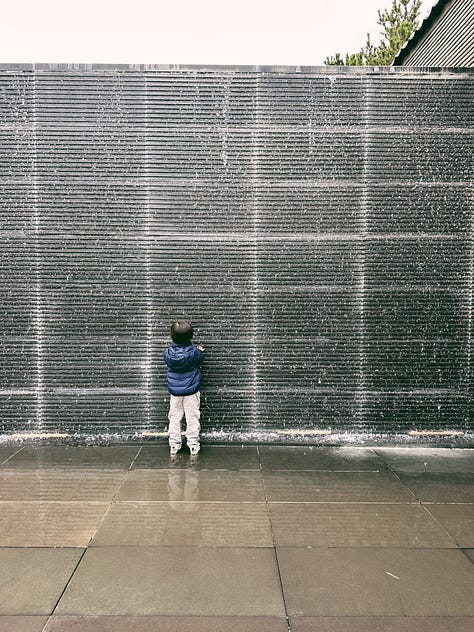


Osulloc Tea Museum — Osulloc is perhaps the largest, most established tea brand from Korea. Their tea museum is a major tourist destination that’s only expanded over the years, so we stop by quickly so the kid can have some (non-tea) ice cream. The cafe and shop is bigger than the actual museum part as far as I can tell (not including the tea fields outside). Plus it was raining and we needed a post-art pick-me-up. The lines are massive but move quickly. Order as many desserts as you can. I always get the hallabong slushie that tastes like your dream Creamsicle. The peanut slushie made from local peanuts from Udo, a tiny island off of Jeju Island is also delicious. And of course the matcha soft serve and any of their tea-based desserts are a given.
Jinmi Myeongga 진미명가 — Dageum bari 다금바리 or saw-edged perch or kelp grouper is a Jeju institution and has even been recognized by the Slow Food Fondazione as worth of inclusion in its Ark of Taste. Chef Kang Changgun is a master of this particular fish, and his restaurant Jinmi Myeongga offers a tasting menu focused on this one fish that is a truly unique nose-to-tail experience. Chef Kang has presented at the Slow University in Italy, where Kwang earned his master’s degree and is at the ready to share his knowledge of this fish and his career. It is an enlightening meal, from the raw slices from various parts of the body to the thin slices of fish lips, fish stomach, fish liver, and fish skin. In between, the team brings out a feast of banchan, braised mackerel, grilled mackerel, fried shrimp, abalone, and more. The meal caps off with a fortifying, milk-white soup made from the grouper bones.
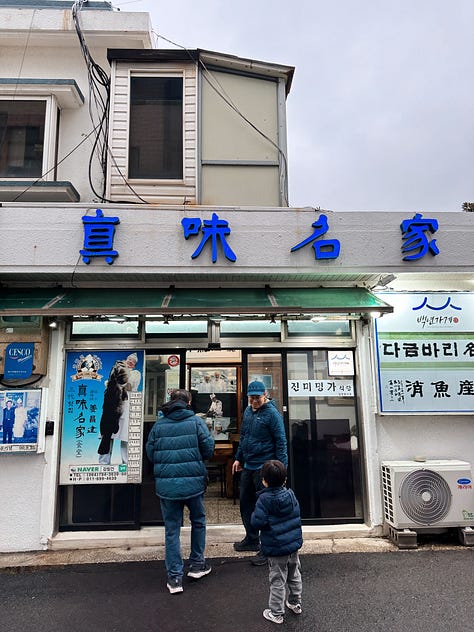

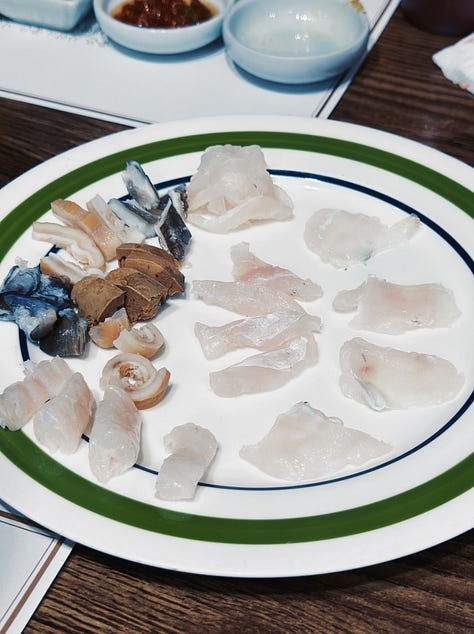
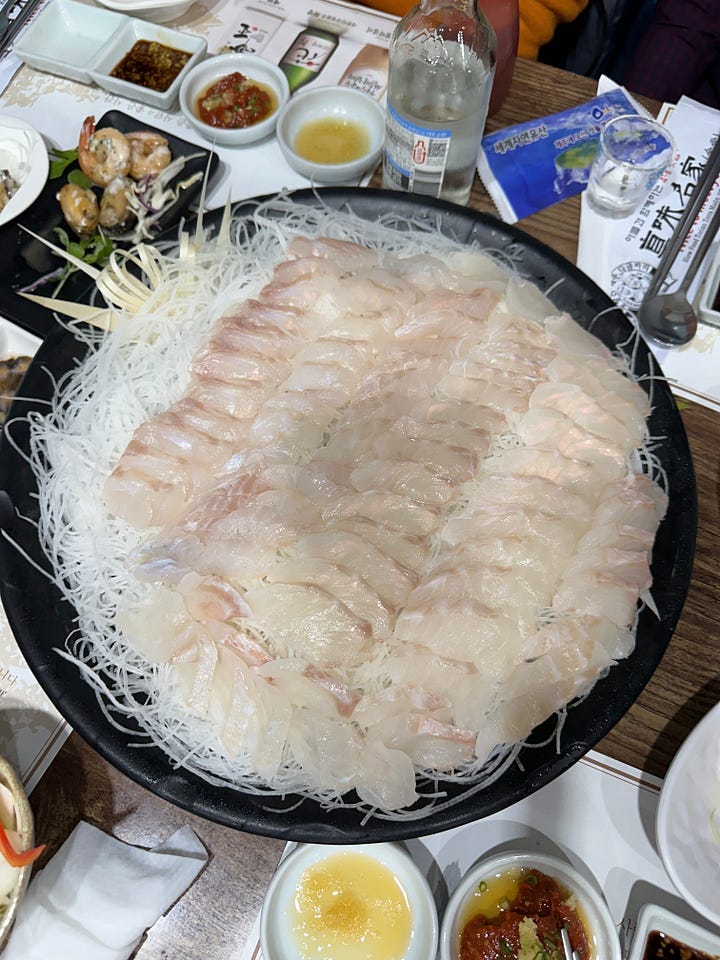
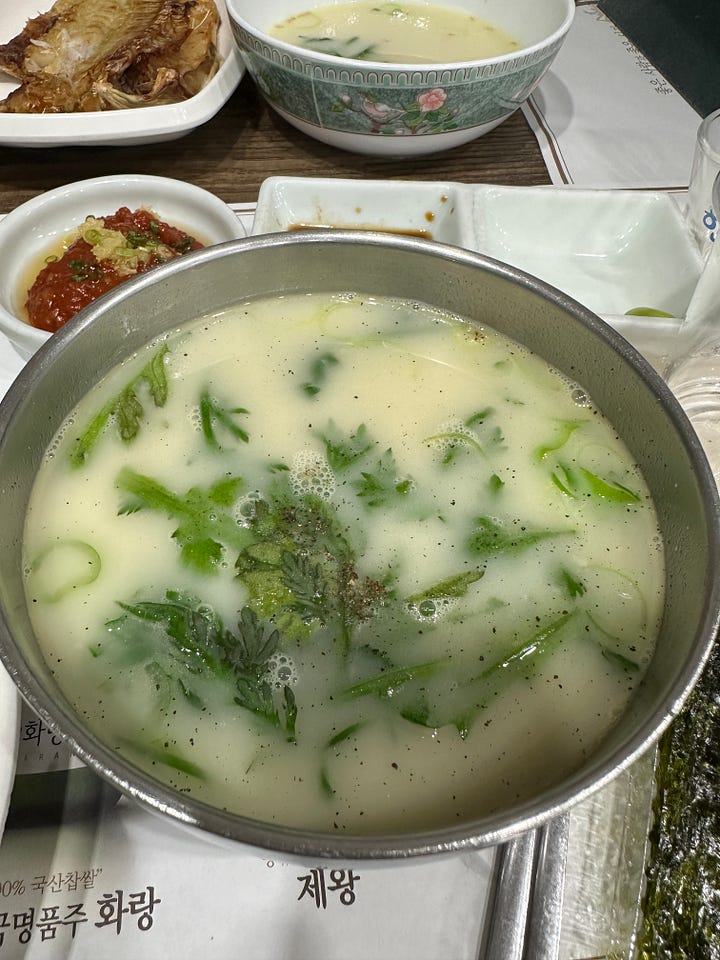
DAY 3 — Jeju Island - Seogwipo
Kwang’s parents flew back to Seoul due to work, just as the rain stopped. We spent the day at a still chilly beach where we gathered sea shells and also dug holes with our son’s excavator toys.
Sukseongdo 숙성도 — Lunch was Jeju black pork barbecue. Sukseongdo has several branches. We rarely go out for Korean BBQ since Kwang and I are both seafood-leaning, but I am still shocked to realize this was our son’s first time at Korean BBQ. I feel like I’ve deprived our errant meat-loving son. Four is the perfect age because everything about the Korean BBQ experience is delightful to a four-year-old — from the ventilation apparatus to the smoke to turning the meat over with tongs.

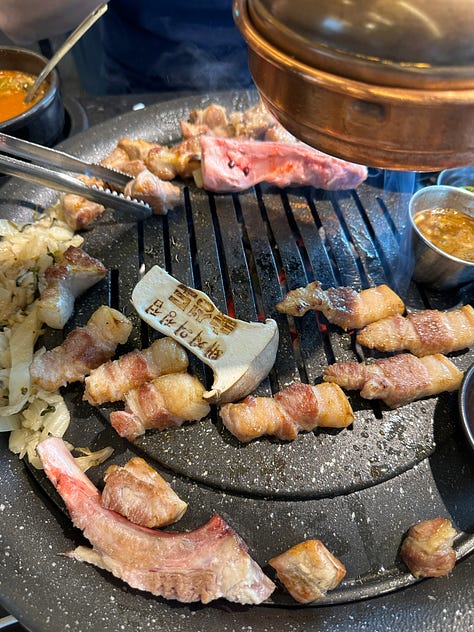
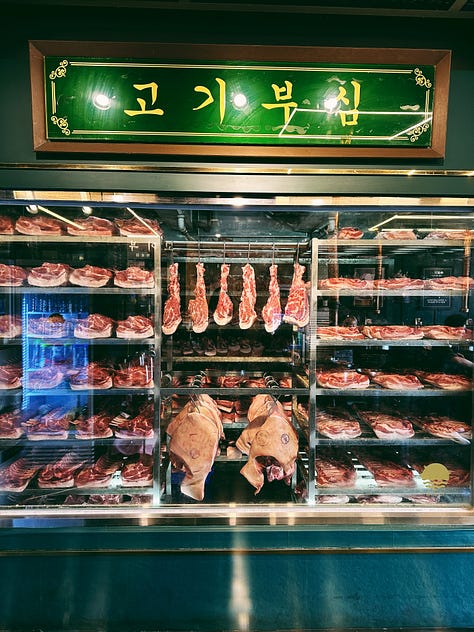
Not that anyone else needs a link to this, but we also visit English Town where the international schools are clustered. We quickly check out the Korean International School for our son, dreaming of the day when we will settle on Jeju-do and open a farm-restaurant there. T’s mastery of Korean will likely not be strong enough to throw him into a local Korean school without being bullied or isolated. There are a few international schools on Jeju Island, and the area is filled with English hagwon or after-school learning centers where beleaguered students cram for college entrance exams. I feel a pang of anxiety for little T of the future.
DAY 4 - Jeju Island
Abebe Bakery — Before we fly to Gwangju for the next leg of our trip, we stop by the white-hot for their social-media-famous cream-filled donuts. We pick out two dozen to gift to friends featuring Jeju and other Korean flavours like hallabong, Udo peanut, Jeju’s signature omegi rice cake with red beans and mugwort. The donuts are unsurprisingly rich and sweet — too much for me, perfect for our son. Korean dessert trends are so overwhelmingly strong and fleeting, and they’ve opened in Seoul and soon Tokyo. I get nervous for concepts like these in Korea. This branch is next to Dongmun market so we browse the produce one last time.
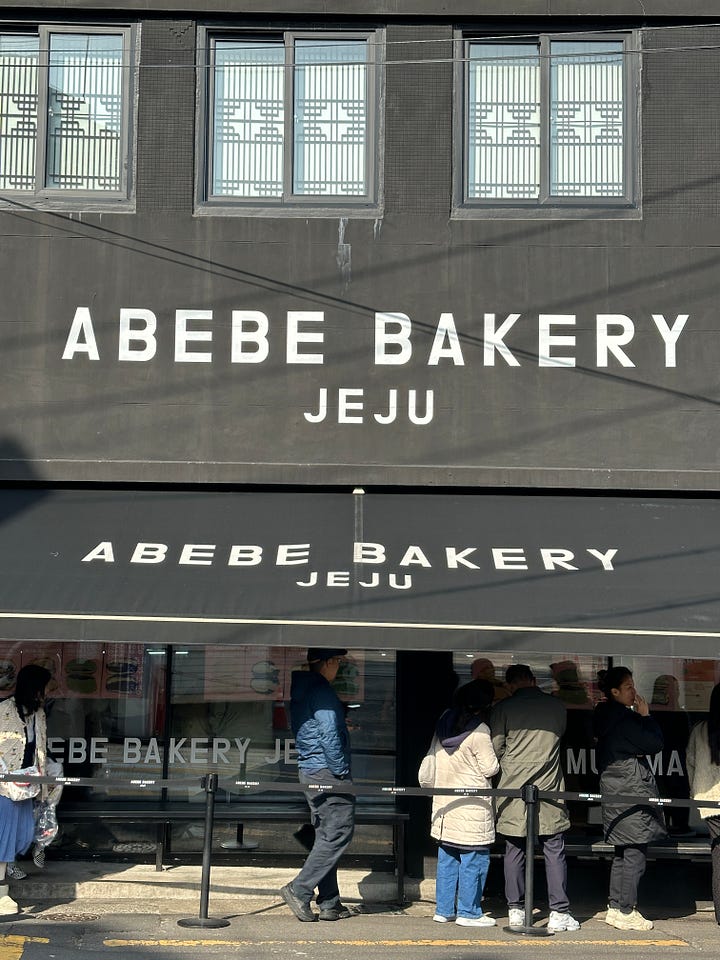
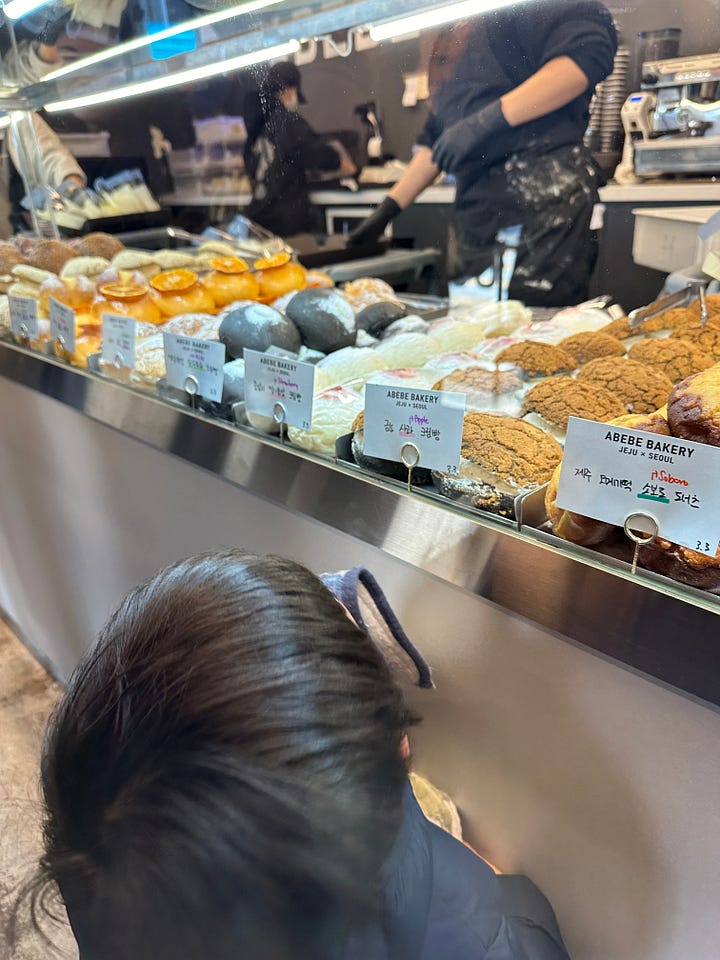
Kim Heesun Momguk 김희선몸국 — And just before we drop off our rental car, nearby is a well-known restaurant specializing in momguk or a seaweed-pork soup. This soup is a Jeju classic and the version here feels so healing. They also have a fern bracken soup that’s meant to cure hangovers. We have both before flying.
And then we were off to Gwangju to drive down to Baekyangsa temple, where Jeong Kwang seunim, our matchmaker, has her hermitage Chunjinam. More on the rest of our trip in my next dispatch. It’s off to get ready for service!
xx Mina


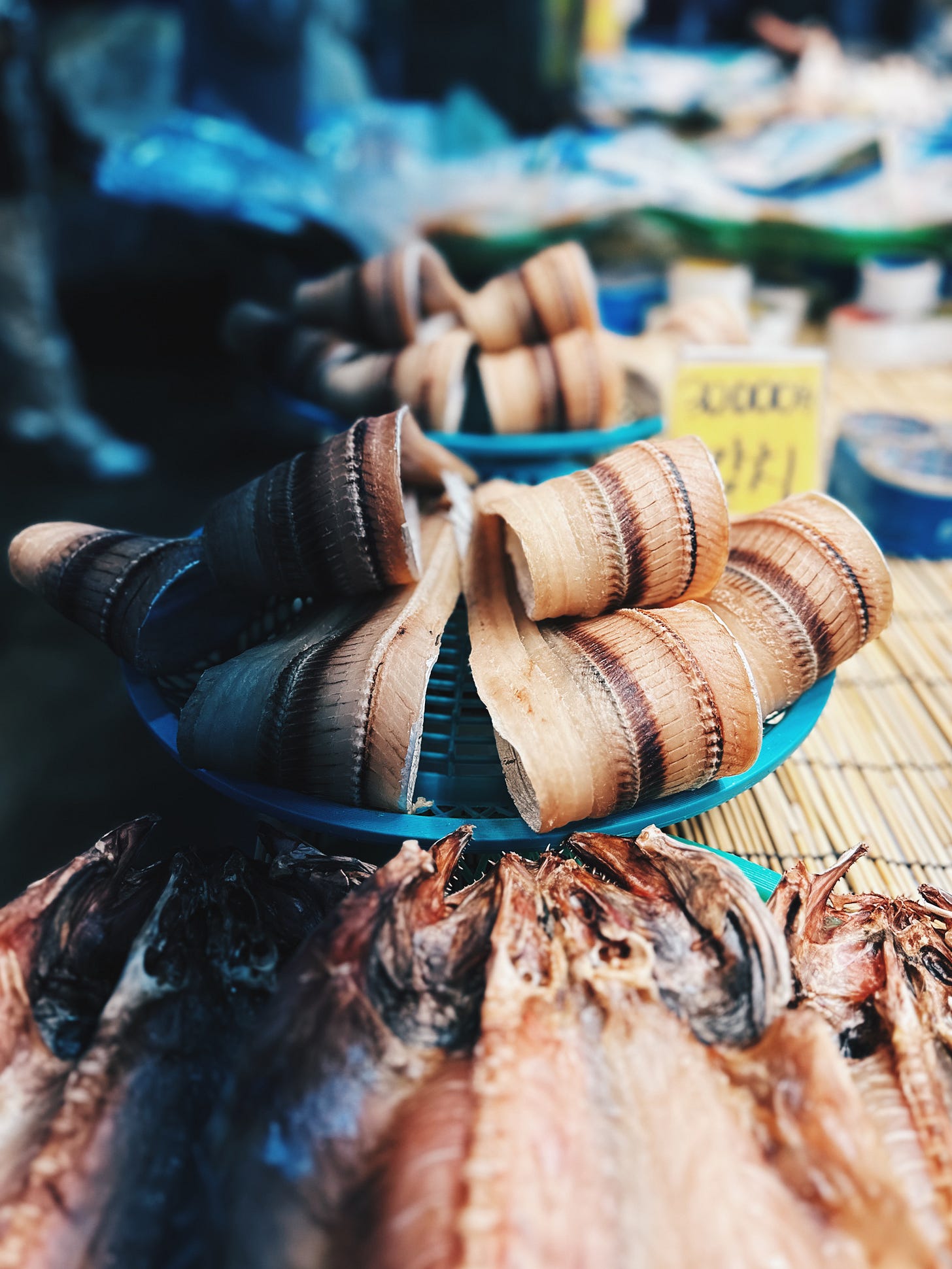


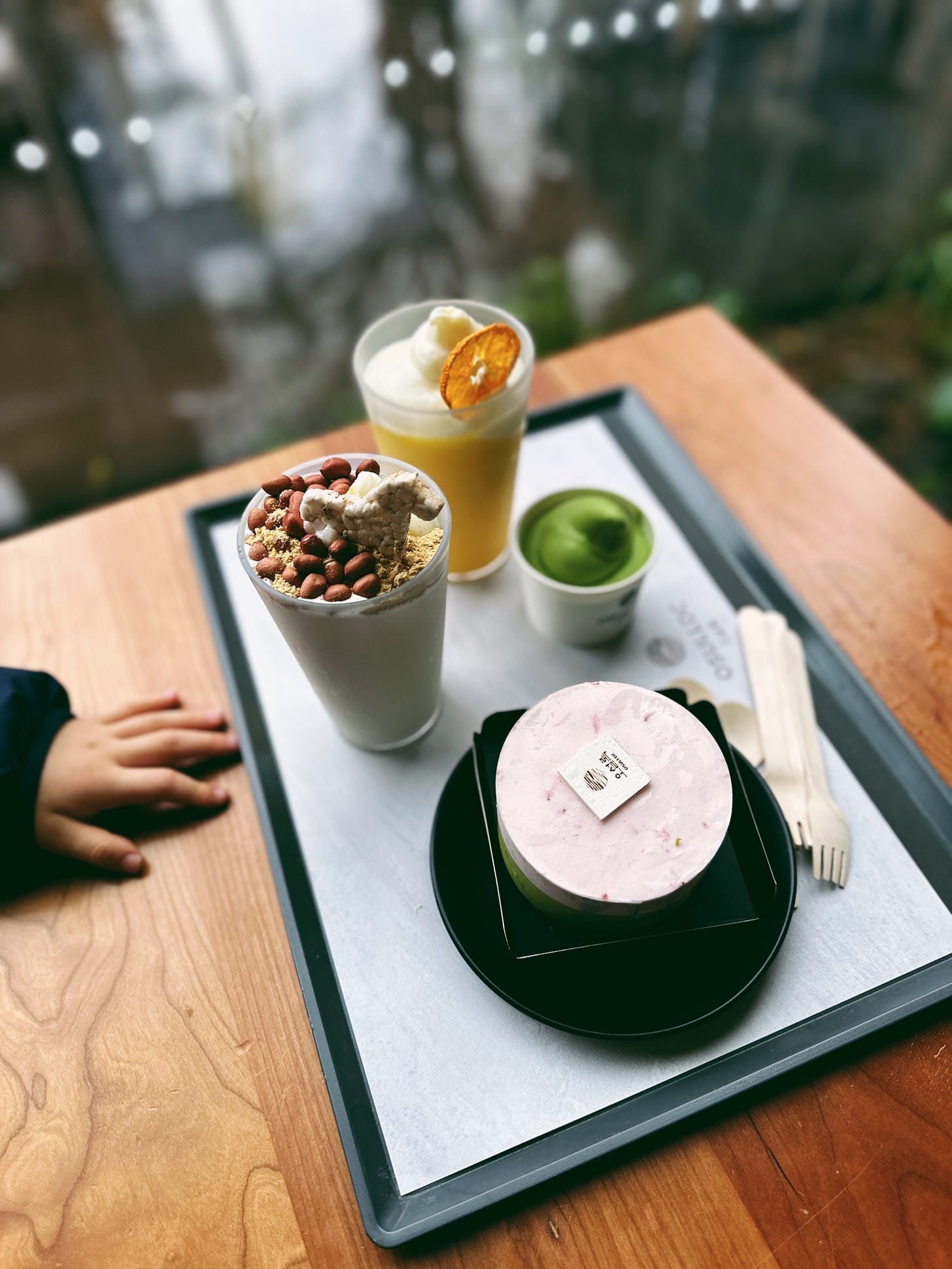
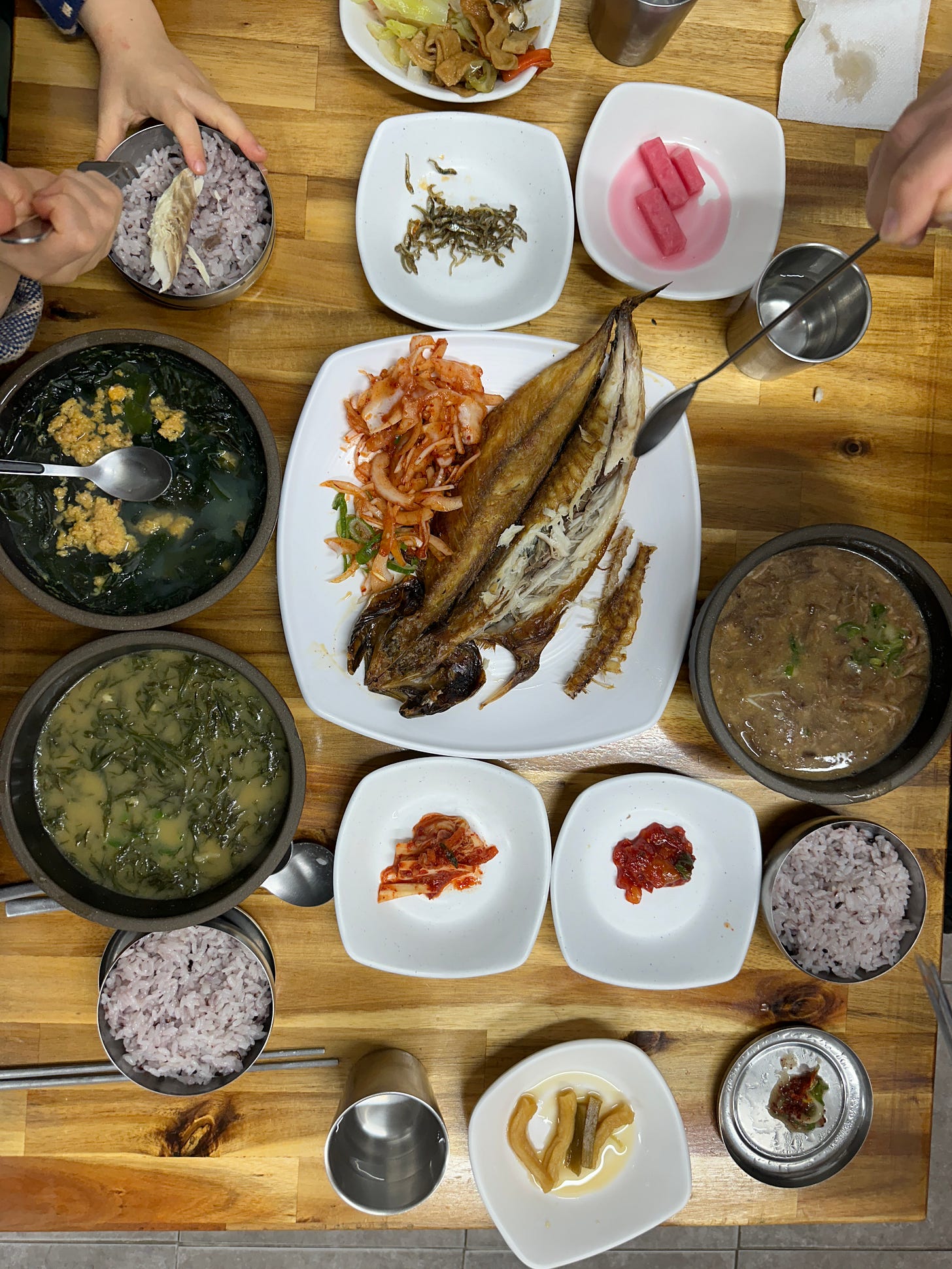
Goh-mah-wuh, Mina! I'm heading to Korea in less than a month for my kids' (15 and 12) first trip there. My mom's already planned Busan and Gyeongju for us and advised against Jejudo because of the rain, but I have such wonderful memories of going there when I was a kid. Your post is motivating me to just do it and go!
Beautiful post as always Mina, and miss you so much 💖